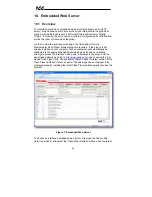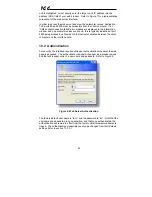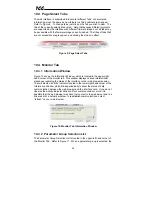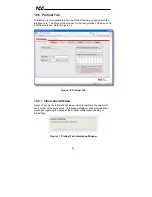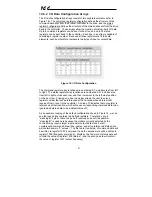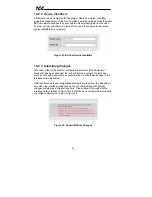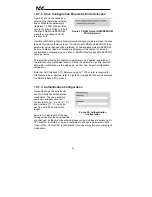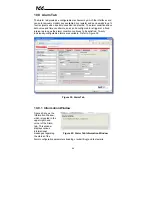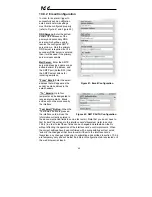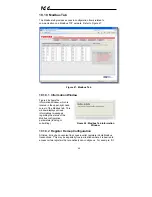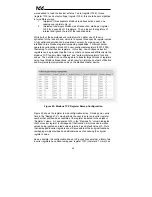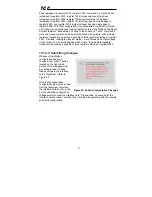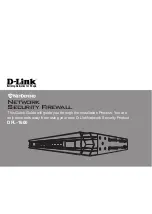
37
ICC
10.7.4
Timeout Configuration
The interface can be configured to
perform a specific set of actions
when network communications are
lost. Support for this feature varies
depending on the protocol: refer to
the protocol-specific section of this
manual for further information.
There are two separate elements
that comprise the timeout
configuration (refer to Figure 29):
•
The timeout time
•
The timeout configuration array
The
timeout time
is a floating-point
number which allows adjustment
down to 1/100
th
of a second (0.01 second increments). This time setting is
used by certain protocols in order to determine abnormal loss-of-
communications conditions and, optionally, to trigger a timeout processing
event. The default timeout time is 10s.
The
timeout configuration array
allows up to 10 register/value pairs to be
designated by the user. When a timeout event is triggered by a protocol, the
timeout configuration array indexes are parsed. If the “register” field for an
index is set to 0, then this index is “disabled” and therefore ignored. If, on the
other hand, the “register” field is non-zero, then the value contained in the
“value” field is automatically written to the designated register. This flexible
mechanism allows up to 10 designated drive registers to have their own unique
“fail-safe” conditions in the event of a network interruption.
For example, Figure 29 shows a timeout time of 10s, and one timeout entry
assignment. If a protocol that makes use of timeout processing triggers a
timeout event, then a value of 5000 will automatically be written to drive register
1008 (the frequency command). Provided the drive has a valid “run” command
and is currently configured to use the network frequency command as its
master frequency command, it will ramp to 50.00Hz.
If timeout/failsafe processing is not desired, just set the “register” fields for all
indexes to 0 (disabled). This is the default condition.
“DEC” and “HEX” selection buttons are also available, and allow changing the
“value” column data display and entry radix between decimal and hexadecimal
formats, respectively. These buttons provide the ability to interact with the
various drive registers in their most natural radix (e.g. a hexadecimal command
word vs. a decimal frequency command value).
Figure 29: Timeout Configuration


